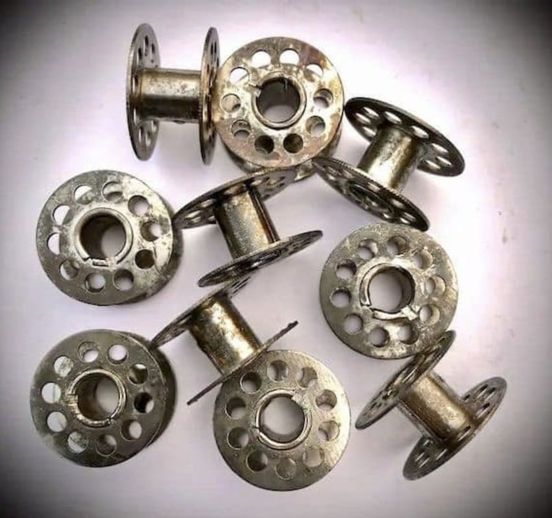A Glimpse into the Past
Sewing bobbins, small yet essential components in the world of sewing, have a rich history that dates back centuries. Though their form has evolved over time, their core purpose has remained the same: to hold thread for sewing machines or hand stitching. These humble tools were once staples in homes and workshops, particularly during the late 19th and early 20th centuries, when handcraft and domestic sewing were more common.
The Early Beginnings
The origins of the sewing bobbin can be traced to the advent of the sewing machine itself. Before machines, thread spools were wound by hand and used with hand-powered needles. However, with the invention of the first sewing machines in the 19th century, a more practical solution was needed to manage the thread. Early bobbins were typically made of wood, and their function was simple: to hold the thread and allow it to unwind smoothly as the machine sewed.
By the late 1800s, sewing machine manufacturers began producing specialized metal bobbins, marking a key innovation in their design. Metal was more durable and reliable compared to wood, and it became the preferred material for bobbins in commercial and domestic machines. Over time, the bobbin’s design was refined to fit various machine models, creating different sizes and shapes.
The Role of Bobbins in Domestic Life
During the 20th century, especially in the 1940s to the 1970s, sewing machines and bobbins became vital in many households. They were not just tools for mending clothes but were used to create entire wardrobes, quilts, home décor, and more. Before the rise of mass-produced clothing, many families relied on sewing as a way to be self-sufficient and to maintain personal style.
Bobbins, though small, were at the heart of this craftsmanship. They held the thread that stitched together garments, blankets, and other fabric creations. The rhythmic sound of a sewing machine as the bobbin worked its magic was a comforting backdrop to daily life. These tools were often passed down through generations, with some families owning vintage machines and bobbins that had been used for decades.
The Materials and Varieties
Vintage sewing bobbins were crafted from various materials, including wood, brass, steel, and aluminum. Wooden bobbins were often seen in early machines and were prized for their sturdiness and handmade quality. As sewing technology advanced, metal bobbins, particularly those made from steel or aluminum, became more widespread. Some bobbins even featured intricate designs and were collected as both functional tools and decorative items.
Bobbins also varied in size and design, with different machines requiring different types. Some were cylindrical, while others were shaped like a small spool with a hollow center. Regardless of the variation, all bobbins were designed to allow thread to wind evenly, preventing tangling and ensuring smooth, continuous stitching.
Legacy and Revival
Though sewing machines and bobbins have become more modernized in today’s fast-paced world, the legacy of vintage bobbins endures. Many seamstresses, collectors, and hobbyists still cherish these vintage tools for both their functionality and sentimental value. Some vintage sewing machines are still in use today, with their accompanying bobbins valued for their authenticity and durability.
In recent years, there has been a resurgence of interest in vintage sewing tools, as part of a broader movement towards sustainability, crafting, and DIY culture. People have rediscovered the art of sewing, and with it, the appreciation for tools like vintage bobbins that symbolize the care and skill of handcraft. These tools also serve as a reminder of a time when things were made with intention and longevity in mind.
Conclusion
The vintage sewing bobbin may seem like a small, simple object, but its history is deeply intertwined with the development of domestic sewing, creativity, and self-sufficiency. From wooden origins to metal refinements, these little tools have helped countless individuals create beautiful, functional items that have lasted for generations. Their legacy lives on in the modern resurgence of crafting and sustainable living, proving that the value of a well-made tool—and the care it embodies—can stand the test of time.

Leave a Reply